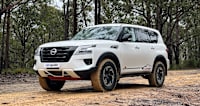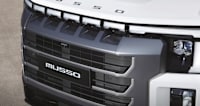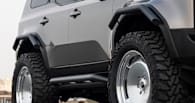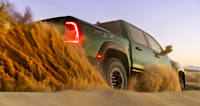Ford will move away from big electric cars in the hopes to drive profits with smaller, more affordable vehicles for the masses.
The carmaker has just released a new model, the Capri, which shares its platform with the Volkswagen ID.4. However, the next frontier is a smaller model Ford is developing under the watch of an ex-Tesla engineer.
The brand told British publication Autocar a little more about its new ‘skunkworks’ architecture and how it will revolutionise Ford’s future.
-
'Found out the hard way': Ford winds back electric car plans in Europe and North America citing EV 'uncertainty' and demand for ICE cars such as the Ford Mustang Mach-E and Ford F-150 Lightning - report
-
Ford sets its sights on MG ZS EV and Hyundai Kona Electric with 2024 Puma electric car
-
Why current electric cars won't save us: We should embrace smaller cars like the Suzuki Swift, BYD Dolphin and Volkswagen T-Roc over the Toyota RAV4, Ford F-150 and Toyota HiLux | Opinion
Ford’s goal is to make the most efficient electric car possible that will launch in the US by late 2026, or early 2027. It is likely to be a spiritual successor to the Puma small SUV and has great potential for Europe.
The man leading the new development is Alan Clarke, who previously oversaw the early development of Tesla’s game-changing Model 3 sedan, with Marin Gjaja, Ford Model E division’s COO, telling Autocar “Alan is the EV architect who designed EVs that actually make money.”
“He came to Ford a couple of years ago and is trying to build the most efficient platform of any EV on the planet. That’s the goal.”
Part of the affordable equation will be lithium-iron phosphate (LFP) battery chemistry currently seen in BYD’s Blade batteries and many entry-level Teslas.
The cost is lower than prominent NMC or NCM lithium-ion batteries used by Ford at the moment and LFP batteries are also more stable, Gjaja describing them as “basically indestructible.”

“If you look at our line-up globally, at this point we don’t really have much in the affordable segment. The key for us is to be affordable, differentiated and profitable. For too long we stayed in the affordable segment, either at break-even or losing money.
“The question is: how do you compete in that segment, especially if you have got a very low-cost manufacturing location like China pumping out affordable vehicles?” Gjaja told Autocar.
Ford is facing somewhat of an identity crisis at the moment with the Blue Oval trying to break its working class roots and sell more premium products – Gjaja cites the Puma as an example of bringing the vehicle upmarket.
“There’s no question that if we’re going to be a true mass brand, we want people to graduate to a vehicle like Explorer, but where do you start them?” he told Autocar.

Ford’s experience with Puma and Capri will lead the brand down a path of ‘differentiated vehicles’ – unconventional competitors if you will. Don’t expect a blobby, dull rebirth of a Fiesta, rather style and substance will be needed in equal measures.
Ford CEO Jim Farley himself has called out the crucial pivot, “You have to make a radical change as an [automaker] to get to a profitable EV. The first thing we have to do is really put all of our capital toward smaller, more affordable EVs,” Farley previously toldCNBC.
The brand won’t launch its attack immediately but build up the selection of models and strategy gradually. The ‘skunkworks’ platform remains in the engineering phase for now but expect to hear more soon.
It is likely to spawn more than one model, with a Puma replacement all-but confirmed and likely to be followed by a city-sized electric car and perhaps an even smaller model. Details on range, battery size and motor power remain up in the air for now.
Ford’s volume in Australia is almost entirely driven by the Ranger ute and Everest ladder frame SUV. The brand sells the Mustang Mach-E locally and has confirmed the as-yet unseen Puma EV for our shores.







.jpg)


.jpg)


.jpg)







.jpg)


_0.jpg)

